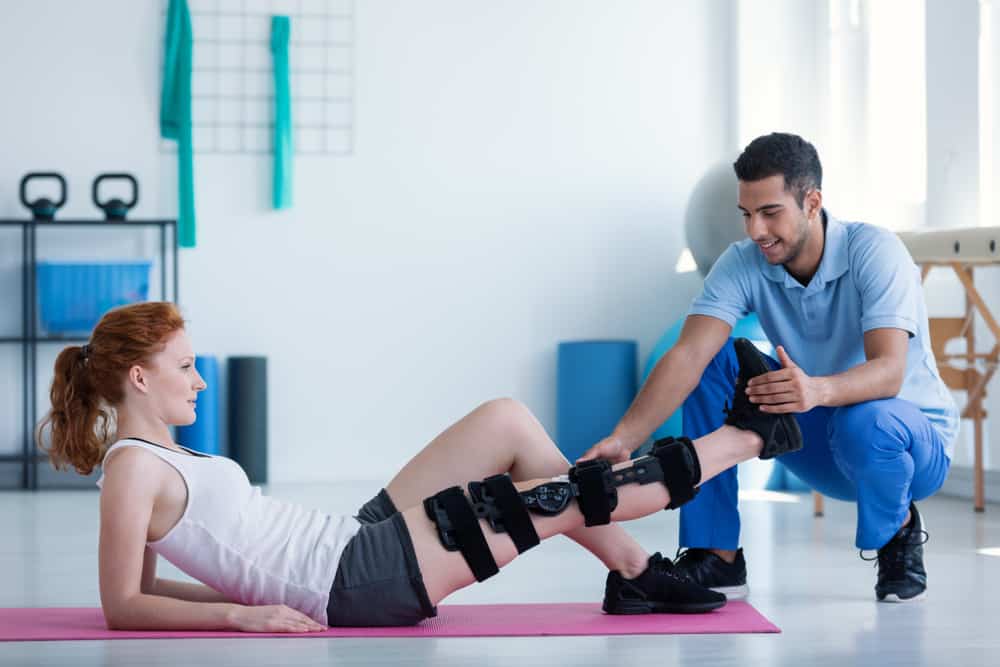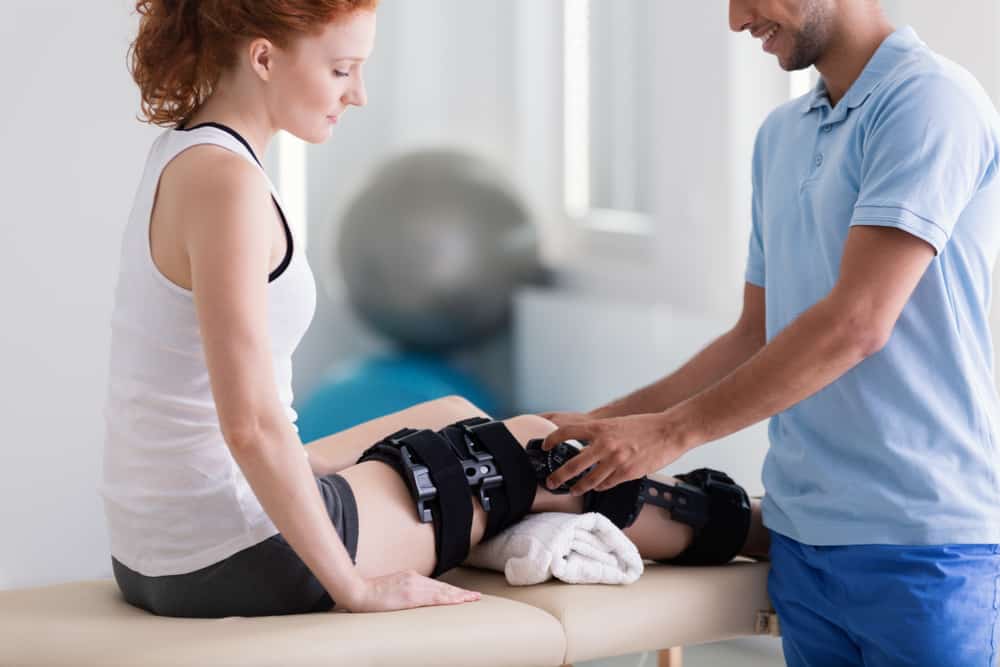Physiotherapist and Physiotherapy Treatments
How Can a Physiotherapist Help?
A physiotherapist & Physiotherapy treatments helps patients recover from an injury or illness. For example, if you injure your knee, a physiotherapist will help you learn exercises that will strengthen the muscles around your knee and will teach you how to do them safely. Some physiotherapists specialise in treating people with joint problems, such as arthritis, and some work with athletes. Other physiotherapists focus on neurological and musculoskeletal conditions. They may also work with patients who have been diagnosed with cancer or other life-threatening illnesses.
Physiotherapy:
Physiotherapy is a type of physical therapy that focuses on helping people manage their health and live more independently. Physical therapists (PTs) are qualified to assess and treat people with musculoskeletal injuries, sports injuries, and other health conditions. Physiotherapists use their knowledge of the body’s structure and function, as well as how it responds to injury, to help their patients get better. PTs can also assist in the management of health conditions and rehabilitation. Physiotherapists work with patients of all ages. They may work with children, adults, or seniors. They can also work in a variety of settings, including hospitals, schools, rehabilitation centres, and private practice offices.
What Does a Physiotherapist Do?
What Does a Physiotherapist Do? A physiotherapist helps people with physical problems. They may work with people who have injuries, arthritis, or other conditions that make it difficult for them to move or function normally. They may also work with people who have chronic pain. Physiotherapists use their expertise in the body’s structure and function, as well as how it responds to injury, to help their patients get better. They perform diagnostic tests and evaluate the results, and they provide treatment and therapy. They can also assist in the management of health conditions and rehabilitation.
For example, a physiotherapist might treat an injured athlete, or they may help someone recover from surgery. A typical physiotherapy program includes physical, occupational, and speech therapy. Physical therapists work with clients on improving their strength, mobility, and range of motion. They may also help people who have problems with balance and coordination, including those who have Parkinson’s disease.
Occupational therapists evaluate clients’ abilities to do activities of daily living, such as dressing themselves, cooking, or getting in and out of bed. Speech therapists assess clients’ speech and language skills, and they work with people who have difficulty speaking because of injury or illness. Many physiotherapists also work with clients who have cognitive problems, such as dementia or Alzheimer’s disease.
A Physiotherapist & Physiotherapy clinic who works with children may be called a paediatric physiotherapist. In this role, they may assess children for developmental delays, injuries, or illnesses. They may also teach parents about exercises that can help improve the child’s physical development. How to Become a Physiotherapist Physiotherapists must be licensed to practice in the state where they live. Physiotherapists can choose from several different education programs to prepare them for their career. The first step in becoming a physiotherapist is to earn an undergraduate degree in physiotherapy. Most physiotherapy programs include courses in anatomy and physiology, biomechanics, and other sciences.
When Is A Good Time To See A Physiotherapist?
A good time to see a physiotherapist is typically when you are experiencing pain or discomfort. If you are experiencing pain or discomfort, a physiotherapist may be a good option to help you regain movement and improve your overall health.
If you are considering seeing a Physiotherapist & Physiotherapy Treatments, there are several things that you should consider before visiting one. How do I know if I need a Physiotherapist? You might think that you don’t need a physiotherapist until you actually experience pain. However, you may not be aware of what your body needs. In fact, your body can tell you when you need to see a physiotherapist. If you are experiencing pain in a certain part of your body, it could be because you have an injury.
The most common injuries are sprains and strains. Other injuries include tears in the muscles, ligaments and tendons. The best way to treat these injuries is by using a physiotherapist. If you are suffering from any kind of injury, you should seek medical treatment from a doctor. After all, they are trained to diagnose and treat various health conditions. How to find a good physiotherapist? If you are considering seeing a physiotherapist, there are several things that you should consider before visiting one.
The following are the factors to consider when choosing a Physiotherapist & Physiotherapy Treatments;
The first thing that you should consider is the type of physiotherapist that you want to see. This is because they specialise in different areas of the body. For example, you may want to see a physiotherapist who specialises in treating your back.
In this case, you will need to ask them about the types of treatments that they provide. If you want to see a general Physiotherapist for Physiotherapy Treatments, you will need to ask them what they can do for you. Some physiotherapists specialise in treating injuries, while others focus on helping people with other conditions. How do I choose a good physiotherapist? If you are considering seeing a physiotherapist, there are several things that you should consider before visiting one.
If you may want to see a physiotherapist who specialises in treating your back. In this case, you will need to ask them about the types of Physiotherapist & Physiotherapy Treatments that they provide.
If you want to see a general physiotherapist, you will need to ask them what they can do for you. Some physiotherapists specialise in treating injuries, while others focus on helping people with other conditions. How do I find a good physiotherapist? The next thing that you should consider is the location where you want to see a physiotherapist. After all, you might not be able to travel to their office. You should consider whether you are willing to pay for a service. After all, you don’t want to get a physiotherapist who charges a high rate and then gives you poor services. If you are considering seeing a physiotherapist, it is important to choose one that is close to your home.
In this way, you will be able to see a physiotherapist whenever you need one. How do I find a good physiotherapist? The next thing that you should consider is the cost of the service. After all, if you cannot afford a physiotherapy service, you shouldn’t use one. You can also ask your friends or relatives about the services that they have used. In this way, you can find a physiotherapist that you can afford.
Physiotherapy Treatments
Physiotherapy is a treatment method that uses physical therapy techniques and equipment to help people with physical injuries. It is used to treat a variety of issues, including pain, stiffness, and dysfunction.
These are the following treatments a physiotherapy offers;
Therapeutic Ultrasound

Therapeutic Ultrasound
Therapeutic ultrasound is a type of ultrasound that uses high-frequency sound waves to produce brief, localised pain relief. It is often used to treat pain from sports injuries, arthritis, and other medical conditions.
The benefits of therapeutic ultrasound can be seen within minutes, and include improved mobility and reduced inflammation. Therapeutic ultrasound has been shown to reduce the amount of time needed for rehabilitation. It is also more effective than heat or ice in reducing pain and swelling, and can be used before and after physical therapy. It works best for acute injuries, but can also be helpful for chronic conditions such as osteoarthritis.
You may have heard of another form of ultrasound called Low Intensity Pulsed Ultrasound, or LIPUS. This is a non-invasive technique that uses ultrasound to stimulate bone growth in the areas where new bones are needed. It’s also used to help heal broken bones, promote healing after surgery, and to speed up the healing process of injured tendons, ligaments, muscles, and cartilage.
Acupuncture

Acupuncture
The basic principle of acupuncture is to use fine needles to stimulate certain points on the skin to alleviate pain and treat other medical conditions.
In addition, acupuncture is used as an alternative medicine to treat certain health issues, including chronic back pain, migraine headaches, cancer, depression, anxiety, insomnia, and infertility. Acupuncture is a form of body-based medicine that involves inserting very fine needles into the skin at specific points on the body to relieve pain and treat various conditions. Acupuncture originated in China over two thousand years ago.
Acupuncture can be used to treat trigger points and pain. Trigger points are small, hypersensitive spots that can cause pain and dysfunction. Acupuncture can be used to treat these spots by removing pressure and pain.
It also helps with the release of endorphins, the body’s natural pain relievers. Acupuncture is used for pain relief and for relaxation. It is usually done by a licensed practitioner who inserts very thin needles into the skin at specific points on the body. There are many different forms of acupuncture, including dry needle acupuncture, electro-acupuncture, fire needle acupuncture, cupping therapy, moxibustion, and scalp acupuncture.
Acupuncture can be used as an alternative medicine to treat certain health issues, including chronic back pain, migraine headaches, cancer, depression, anxiety, insomnia, and infertility. Acupuncture is a form of body-based medicine that involves inserting very fine needles into the skin at specific points on the body to relieve pain and treat various conditions. Acupuncture originated in China over two thousand years ago. Acupuncture can be used to treat trigger points and pain. Trigger points are small, hypersensitive spots that can cause pain and dysfunction.
Acupuncture can be used to treat these spots by removing pressure and pain. It also helps with the release of endorphins, the body’s natural pain relievers. Acupuncture is used for pain relief and for relaxation. It is usually done by a licensed practitioner who inserts very thin needles into the skin at specific points on the body. There are many different forms of acupuncture, including dry needle acupuncture, electro-acupuncture, fire needle acupuncture, cupping therapy, moxibustion, and scalp acupuncture.
Manual Therapy

Manual Therapy
Manual therapy is a type of therapy that focuses on the use of hands-on techniques to treat conditions. Manual therapy may be used to treat conditions such as pain, tension, and spasm. Manual therapy may also be used to improve the function of the muscles and joints.
Manual therapy has been practiced for many years and is used in both medical and non-medical settings. In medical settings, manual therapy is commonly used by physical therapists to help with pain relief and functional improvement. Manual therapy is often combined with other therapies, such as exercise, stretching, and heat/cold treatment. Manual therapy is based on the belief that muscles, tendons, ligaments, and nerves are connected by an intricate network of fascia (a tough connective tissue) and that this network can become stretched or strained if not treated properly.
Manual therapy includes a variety of techniques designed to stretch these tissues and relieve pain. Manual therapy is commonly performed in a medical setting, but manual therapy may also be performed in non-medical settings. For example, a chiropractor may perform manual therapy on patients who come into the office for regular appointments. A physical therapist may use manual therapy when treating patients who have suffered an injury or accident. A massage therapist may use manual therapy when treating patients who have experienced chronic muscle or joint pain.
A chiropractic physician may use manual therapy when treating patients who have suffered an injury or accident. The most common manual therapy technique used in both medical and non-medical settings is massage. Massage therapy has been used since the time of ancient Greece and Rome. Massage therapy is a form of manual therapy that is used to treat injuries or conditions. It is a common technique used in both medical and non-medical settings. Massage therapy has been used since the time of ancient Greece and Rome.
Kinesiology Tape
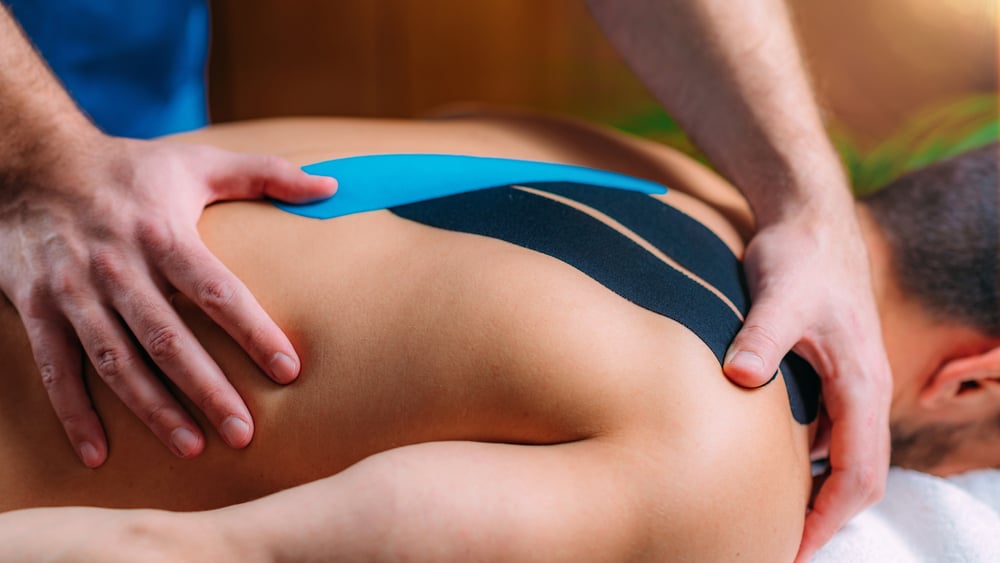
Kinesiology Tape
This Kinesiology tape is designed to help with physio rehabilitation. It is a stretchy adhesive tape that can be used to improve range of motion, flexibility, and muscle strength.
The tape can be used as a support, to reduce pain or stress, or to prevent injuries. Kinesiology tape is not a substitute for physiotherapy, but can be used to assist in your recovery. The tape may be used daily or as needed, so it is important to keep the tape on as long as you need it. The tape can be used to:
Increase range of motion Reduce pain Prevent injuries Promote healing The tape is available in a variety of different widths, lengths, and colors. Kinesiology tape The kinesiology tape is designed to provide support and comfort to your muscles.
This Kinesiology tape is designed to help with physio rehabilitation. It is a stretchy adhesive tape that can be used to improve range of motion, flexibility, and muscle strength. The tape can be used as a support, to reduce pain or stress, or to prevent injuries.
Kinesiology tape is not a substitute for physiotherapy, but can be used to assist in your recovery. The tape may be used daily or as needed, so it is important to keep the tape on as long as you need it. The tape can be used to: Increase range of motion Reduce pain Prevent injuries Promote healing The tape is available in a variety of different widths, lengths, and colors. Kinesiology tape The kinesiology tape is designed to provide support and comfort to your muscles.
Kinesiology tape is not a substitute for physiotherapy, but can be used to assist in your recovery. The tape may be used daily or as needed, so it is important to keep the tape on as long as you need it. The tape can be used to: Increase range of motion Reduce pain Prevent injuries Promote healing The tape is available in a variety of different widths, lengths, and colours. Kinesiology tape is not a substitute for physiotherapy, but can be used to assist in your recovery.
The tape can be used to: Increase range of motion Reduce pain Prevent injuries Promote healing The tape is available in a variety of different widths, lengths, and colours. Kinesiology tape is not a substitute for physiotherapy, but can be used to assist in your recovery. The tape can be used to Increase range of motion Reduce pain Prevent injuries Promote healing The tape is available in a variety of different widths, lengths, and colours. Kinesiology tape is not a substitute for physiotherapy, but can be used to assist in your recovery. The tape can be used to: Increase range of motion Reduce pain Prevent injuries Promote healing The tape is available in a variety of different widths, lengths, and colours. Kinesiology tape is not a substitute for physiotherapy, but can be used to assist in your recovery. The tape can be used to: Increase range of motion Reduce pain Prevent injuries Promote healing The tape is available in a variety of different widths, lengths, and colours. Kinesiology tape is not a substitute for physiotherapy, but can be used to assist in your recovery.
Manipulation or Mobilisation
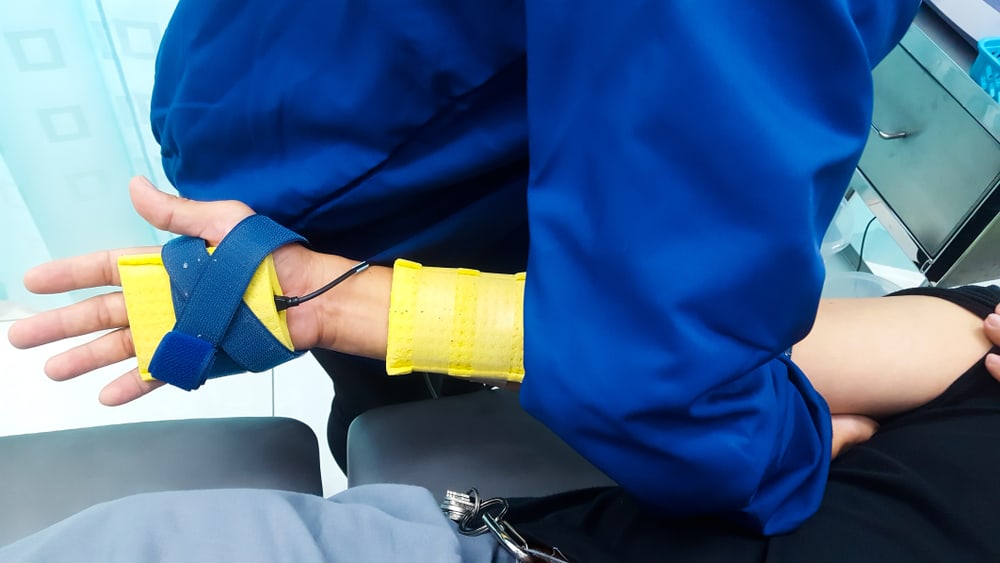
Manipulation Therapy
For Therapeutic purposes is widely used in sports and other areas of physical activity. Manipulation involves the application of manual force to a body part in order to correct or aid a person’s movement pattern, particularly by reducing pain or enhancing function. Manipulation can be performed manually or using mechanical devices such as traction or exercise machines. Manual manipulation can be carried out by an expert physiotherapist.
.hey are generally used to treat musculoskeletal injuries or chronic pain conditions. There are two main categories of manual manipulation: soft tissue techniques, which involve working on the soft tissues around the joint, and joint mobilisation techniques, which work on the joint itself. Manipulations are used in physiotherapy as well as in other healthcare professions. The term manipulation is not well defined, but it has been used to describe a wide range of techniques. In general, manipulation involves moving a joint through its normal range of motion and then holding it in a position other than that which it normally occupies.
Manipulation may be done either passively or actively, depending on the type of technique being applied. It is generally agreed that passive manipulations do not require the patient to move the joint actively, whereas active manipulation involves the patient actively moving the joint. There are many types of manipulation, and they can be described according to their purpose. Some manipulations are used to move a joint through its normal range of motion, usually in an attempt to reduce pain and inflammation. Examples include passive range of motion (PROM) mobilisation and gentle joint mobilisation. These techniques are usually performed by a physiotherapist. Other manipulations are used to hold a joint in a position other than that which it normally occupies.
Massage and Soft Tissue Therapy Massage
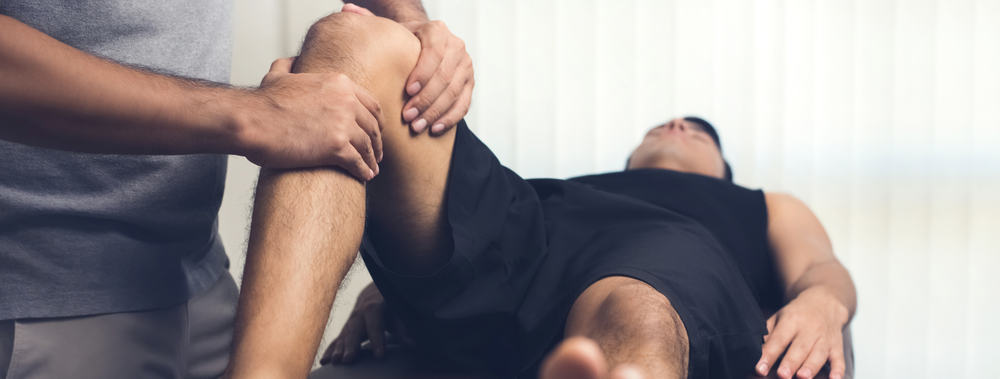
Massage and Soft Tissue Therapy Massage
Massage and Soft Tissue Therapy Massage is a form of technique that is used to promote relaxation and healing. Massage can be used to relieve pain, stress, and tension in the body. It can also improve blood circulation and lymphatic flow. Massage therapy used by physio is to improve the pain and trigger points in the body.
The main purpose of a massage therapist is to work on the muscle, connective tissue, fascia, joints, bones, and nerves. There are different types of massage techniques such as Swedish, Deep Tissue, Sports, and Trigger Point Massage. Deep Tissue Massage A deep tissue massage focuses on the deeper muscles in the body. These muscles are usually the ones that you do not want to use much during your day. They are also called the core muscles. Deep tissue massage will help you release the tension and stress in your body. It can be effective for people who have chronic pain and injuries. Sports Massage Sports massage is used to treat sports injuries such as sprains, strains, tendonitis, and muscle tears.
Sports massage is beneficial when it comes to preventing injury and increasing performance. It is very similar to a deep tissue massage. Trigger Point Massage A trigger point massage is done by using pressure on a specific area of the body. These are the areas that have been causing the patient pain or discomfort. Trigger point massage is helpful in decreasing pain, inflammation, and stiffness. Trigger points are found in the muscles that are tight and painful. There are different types of trigger points such as myofascial trigger points, fibromyalgia trigger points, joint trigger points, and complex trigger points. Myofascial trigger points are usually found in the muscles of the face, neck, and shoulders. Fibromyalgia trigger points are usually located in the muscles of the back, chest, arms, legs, and abdomen. Joint trigger points are usually found in the knee, elbow, ankle, wrist, and shoulder. Complex trigger points are usually found in the muscles that are hard to pinpoint and treat. Trigger point massage can be used to treat a variety of problems including fibromyalgia, chronic pain, and migraine headaches.
The massage therapist will use slow deep strokes to relax the muscles and release tension. Trigger point massage is also helpful when it comes to improving posture and relieving pain. There are different types of massage techniques. Some of these massage techniques include Swedish massage, deep tissue massage, sports massage, trigger point massage, and reflexology. There are different types of massage therapists such as massage therapists, physiotherapists, and athletic trainers. Massage therapy is not only used for relaxation but also to help people who have muscle tension, arthritis, and joint pain. Deep Tissue Massage Deep tissue massage is a type of massage that focuses on the deeper muscles in the body.
Deep tissue massage is effective in treating chronic pain, sports injuries, and arthritis. It is also helpful in increasing flexibility, range of motion, and blood flow in the muscles. Deep tissue massage is usually done by using slow deep strokes. The massage therapist will apply pressure to the targeted areas of the body. A deep tissue massage therapist will focus on the deep layers of muscle fibers that cause the pain or stiffness in the muscles. This type of massage helps in relaxing the muscles and relieving pain. Deep tissue massage is very beneficial in relieving chronic pain and stiffness. This type of massage is also very helpful when it comes to improving posture and relieving pain.
Muscle Electrical Stimulator
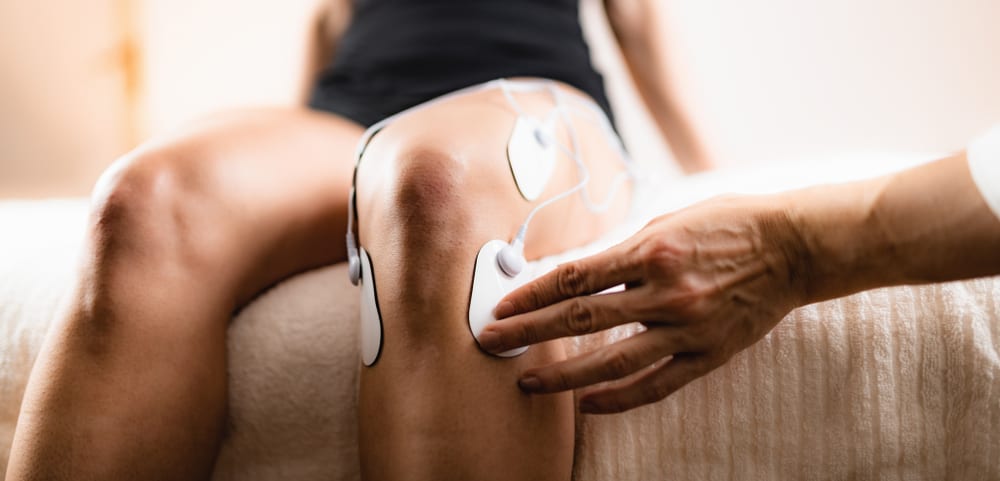
Muscle Electrical Stimulator
Muscle Electrical Stimulator (MES) is one of the Physiotherapist & Physiotherapy Treatments is used by the physiotherapy clinic and is a device that is used to stimulate the muscles. It is a relatively new treatment option that is being used more and more often by physical therapists.
MES has been used for many years to help patients with brain injuries. A brain injury can cause muscle atrophy, or loss of muscle tissue. The goal of MES is to help the body build up the muscle. The stimulator sends electrical pulses through the muscle tissue. These pulses cause muscle cells to contract and relax. This in turn causes the muscles to stretch and lengthen.
MES is often used for people who have spinal cord injuries. This type of injury can cause muscle atrophy, or loss of muscle tissue. Spinal cord injuries cause the muscles to be weak and flabby. With MES, the muscles can be made stronger. Muscle Electrical Stimulator (MES) is a device that is used to stimulate the muscles. It is a relatively new treatment option that is being used more and more often by physical therapists. MES has been used for many years to help patients with brain injuries. A brain injury can cause muscle atrophy, or loss of muscle tissue. The goal of MES is to help the body build up the muscle. The stimulator sends electrical pulses through the muscle tissue. These pulses cause muscle cells to contract and relax. This in turn causes the muscles to stretch and lengthen. MES is often used for people who have spinal cord injuries. This type of injury can cause muscle atrophy, or loss of muscle tissue. Spinal cord injuries cause the muscles to be weak and flabby. With MES, the muscles can be made stronger.
Muscle Electrical Stimulator (MES) is a device that is used to stimulate the muscles. It is a relatively new treatment option that is being used more and more often by physical therapists. MES has been used for many years to help patients with brain injuries. A brain injury can cause muscle atrophy, or loss of muscle tissue. The goal of MES is to help the body build up the muscle. The stimulator sends electrical pulses through the muscle tissue. These pulses cause muscle cells to contract and relax. This in turn causes the muscles to stretch and lengthen. This article is about how to get an electrical stimulator. It will explain how to buy an electrical stimulator, what features it should have, and how to choose which one to buy. What Is An Electrical Stimulator? An electrical stimulator is a device that is used to stimulate the muscles. It is a relatively new treatment option that is being used more and more often by physical therapists. MES has been used for many years to help patients with brain injuries. A brain injury can cause muscle atrophy, or loss of muscle tissue.
The goal of MES is to help the body build up the muscle. The stimulator sends electrical pulses through the muscle tissue. These pulses cause muscle cells to contract and relax. This in turn causes the muscles to stretch and lengthen. Features Of An Electrical Stimulator In order to get the most out of a MES, there are certain things you should know about the different models available. MES Models There are three main types of MES: Cranial Electrical Stimulator (CES) An electrical stimulator that is used to stimulate the muscles of the head. It is used for people who have a brain injury.
The CES is worn around the head. It is connected to an electrode that is placed on the scalp. The CES sends electrical pulses through the brain. These pulses cause the brain cells to contract and relax. This in turn causes the muscles of the head to be stimulated. Cranial Electrical Stimulator (CES) An electrical stimulator that is used to stimulate the muscles of the head. It is used for people who have a brain injury. The CES is worn around the head. It is connected to an electrode that is placed on the scalp. The CES sends electrical pulses through the brain. These pulses cause the brain cells to contract and relax. This in turn causes the muscles of the head to be stimulated.
Postural and General Advice
Good posture allows your body to function better and feel better. We know that sitting for prolonged periods of time is bad for us, but how much is too much? How much do you need to move? What are the best exercises for good posture? Is there a difference between different types of postures? In this article we will address these questions and others and give you some great exercises that will keep your posture strong and your muscles toned. What Is Posture? Posture is the way your body is positioned and is controlled by your core. Your core consists of the muscles in your abdomen, back, and pelvis.
If you are experiencing any pain, discomfort or restricted movement, contact your physiotherapist as soon as possible. Physiotherapist & Physiotherapy Treatments can help you to improve your mobility, flexibility and strength. They can advise you best on postural improvement advice.
1.The best exercise for improving posture is abdominal bracing. The basic principle behind abdominal bracing is that it works the abdominal muscles, which are the most important muscle group for maintaining good posture. When performing abdominal bracing, the main focus should be on working the transverse abdominis muscle, which is located in the middle of your abdomen. The transverse abdominis muscle helps to maintain a neutral spine. As the transverse abdominis muscle is one of the most important core muscles, you should perform this exercise at least 3 times per day. The best exercises for improving posture are the following:
- Sit Up Sit up straight on the floor and press your palms down on the ground. Slowly lift your hips and sit up straight, keeping your back straight. You may also use a chair or bed.
- Bridge Stand with your feet shoulder width apart and hands by your sides. Lift your head up, bringing your chin towards your chest. Hold this position for 5 seconds and slowly return to the starting position.
- Tuck-Up Lie face down on the floor and lift your legs so that they are perpendicular to the ground. Raise your arms out to the side, and then raise your head up and tuck in your chin. Hold for 5 seconds and slowly return to the starting position.
- Crunch Lie flat on your back, arms straight above your head. Your legs should be together and bent at 90 degrees. Slowly lower your head towards the floor until your forehead touches the ground. Then slowly lift your head back up. Repeat 10 times.
- Leg Pull-Through Stand with your feet shoulder width apart and hands on your hips. Bend your knees slightly and slowly lean forward, keeping your back straight. The top of your buttocks should touch your heels. Then lift your legs straight up as high as you can, keeping your back straight. Lower them down and repeat 10 times.
- Single Leg Bridge Lie on your back and bring one leg up and across your body so that it is perpendicular to your torso.
Laser Therapy
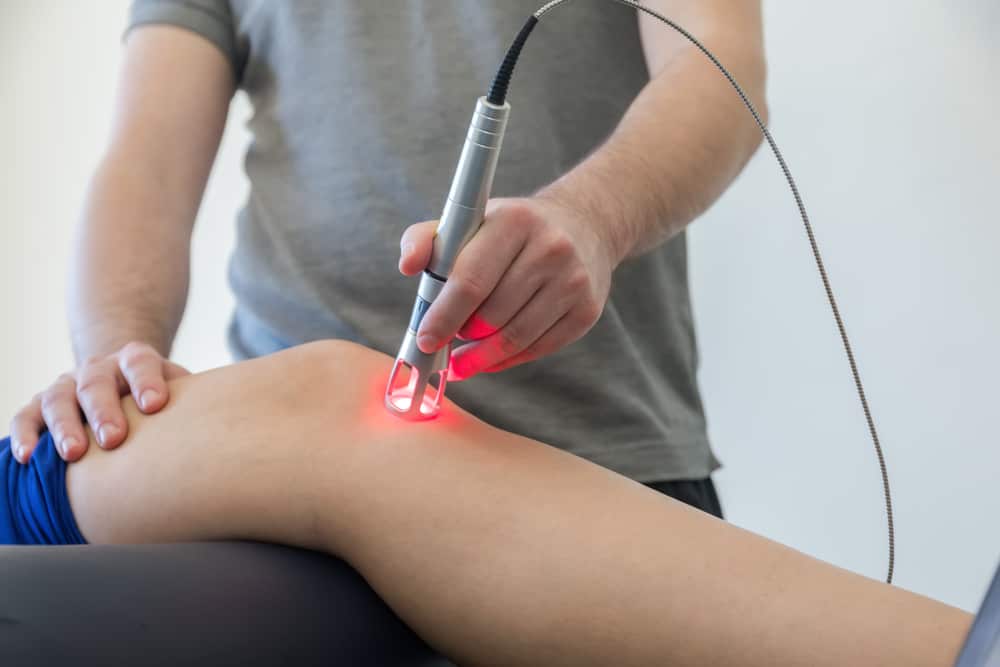
Laser Therapy
Lasers are a type of technology that emits a beam of light that can be directed at a specific target. The light can be used to treat a range of physical ailments, including pain, inflammation, and cancer.
Laser therapy is also known as laser medicine, photobiomodulation therapy (PBMT), or photochemical therapy. Laser therapy can help reduce swelling, reduce pain, and speed up the healing process for wounds and conditions like arthritis. The most common form of laser therapy is called “laser acupuncture”. This involves directing a light beam at specific points on your skin to stimulate nerve endings and improve blood circulation.
Lasers are used by the Physiotherapist & Physiotherapy Treatments and is most commonly used to treat musculoskeletal issues like arthritis and chronic pain. Laser therapy is safe for most people. There are some precautions you should take before beginning laser therapy, such as avoiding areas with sun damage and applying sunscreen lotion if you plan to be outdoors while receiving treatment. You should also avoid using any laser equipment during pregnancy and breastfeeding.
Laser therapy is often recommended by health care providers for patients who have not responded to traditional treatments. The human body is the most complex organ in the universe. Its intricate system of muscles, bones, organs, tissues, and cells is designed to perform many functions at once. It is able to maintain a constant temperature, it can detect and respond to danger, it can heal itself, and it can even regenerate lost tissue. The human body is designed to be in good health and able to function at its peak level. Unfortunately, most people live in a world where they do not eat well or exercise enough. They don’t get enough sleep, and they may be exposed to toxins in the environment. The result of all this is that they experience chronic diseases. Chronic diseases are illnesses that last longer than three months and affect the body’s ability to function. They can include anything from high blood pressure to cancer. Chronic diseases are the leading cause of death worldwide, with approximately 60% of deaths attributed to them. Cancer is an illness that is a serious concern for many people today.
Extracorporeal Shockwave Therapy (ESWT)
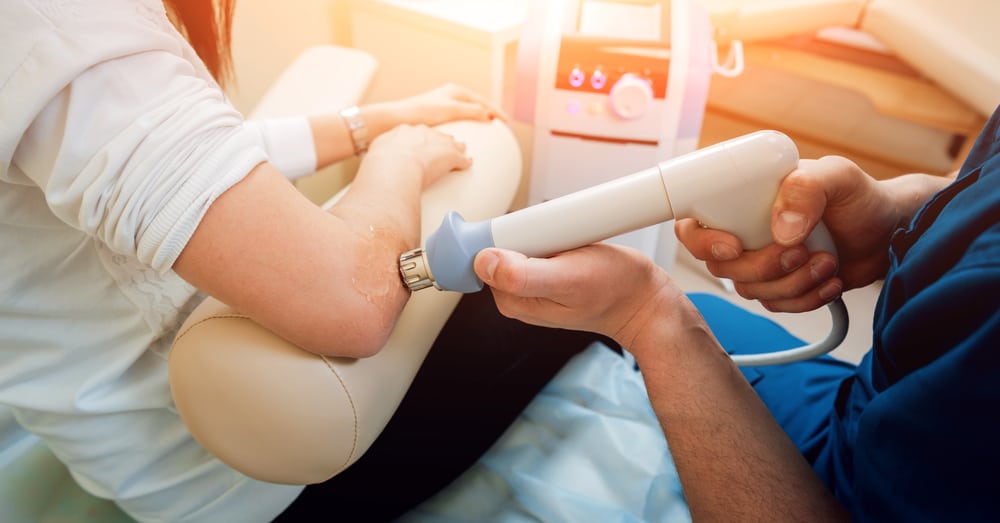
Extracorporeal Shockwave Therapy
Extracorporeal Shockwave Therapy (ESWT) is another one of the Physiotherapist & Physiotherapy Treatments is used by the physiotherapy clinic and is a non-invasive, low-energy technique that uses high-frequency, short-duration bursts of energy to treat a wide range of medical conditions. ESWT is typically used to treat pain, inflammation, and other medical conditions.
This device has been used successfully in more than 2 million patients worldwide. The treatment is applied by placing the patient in a reclining position and having the patient lie on a special pad over the painful area. The ESWT device then delivers high-intensity shockwaves at a rate of 100,000 per second, which travels through the body and is absorbed by the surrounding tissues. Once the shockwave reaches the area of discomfort, it causes the affected tissue to contract, thereby stimulating the release of chemicals that help to repair damaged cells and speed healing. Pain Relief The most common complaint of patients who have had ESWT treatment for Plantar Fasciitis, Shoulder pain, Tennis elbow, Achilles Tendonopathy is that they experienced immediate relief from their pain after the treatment.
The shockwave also stimulates the release of growth factors that cause new tissue to grow to replace damaged tissue, thereby healing the injured area. ESWT can be used with other modalities such as ultrasound or injections to enhance the effect and speed up the healing process. Pain Relief Treatment Time: 30 minutes to 1 hour Treatment Frequency: One session per day Results: Average of 3 to 5 months The results are dramatic! Most patients have an 80% to 95% reduction in pain and a 50% to 90% reduction in inflammation within the first week after their treatment.
How Does ESWT Work? Shockwave Therapy is a noninvasive form of treatment that uses an electromagnetic field to stimulate the body’s natural healing processes. It is a safe, cost-effective method that can help to eliminate the symptoms of chronic and acute conditions. A series of brief electrical impulses delivered to specific parts of the body via an electromagnetic source produce shockwaves. These shockwaves travel through the body and are absorbed by the surrounding tissues.
The shockwave travels to the affected area where it causes the affected tissue to contract, thereby stimulating the release of chemicals that help to repair damaged cells and speed healing. Benefits of ESWT The benefits of ESWT include: Pain Relief: Shockwave Therapy has been shown to be effective in eliminating or reducing pain.
In fact, studies have shown that ESWT can relieve pain within one hour. Shockwave Therapy has been shown to be effective in eliminating or reducing pain. In fact, studies have shown that ESWT can relieve pain within one hour. Quicker Recovery: The shockwaves stimulate the release of growth factors and other healing agents that cause new tissue to grow to replace damaged tissue, thereby healing the injured area.
Transcutaneous Electrical Nerve Stimulation (TENS)
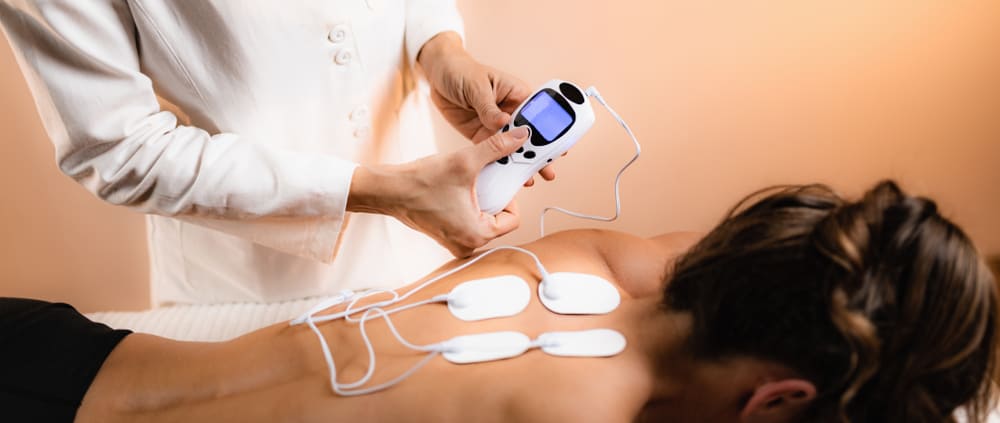
Transcutaneous Electrical Nerve Stimulation
Transcutaneous Electrical Nerve Stimulation (TENS) is one of the Physiotherapist & Physiotherapy Treatments is used by the physiotherapy clinic and is a medical device that is used to relieve pain. The device is placed on the skin and sends electrical pulses through the skin to the source of pain.
It has been used in the treatment of chronic pain for more than 40 years. TENS can be applied to painful muscles, joints, tendons, nerves or other tissue, or to the skin in order to block pain signals transmitted from the affected tissues. The mechanism of action of TENS is not well understood, but it has been proposed that TENS affects the activity of neurons by modulating the function of sodium channels, potassium channels, or calcium channels.
In the 1960’s, it was discovered that a strong electrical current, when applied to the skin in a small area, would cause local pain relief. This discovery led to the development of Transcutaneous Electrical Nerve Stimulation (TENS). TENS devices operate by applying a constant low intensity electrical current through the skin. TENS is used in treatment of chronic pain, including acute and chronic pain conditions, such as postoperative pain, diabetic neuropathy, fibromyalgia, myofascial pain syndrome, osteoarthritis, arthritis, post-herpetic neuralgia, complex regional pain syndrome, phantom limb pain, migraine, carpal tunnel syndrome, and other types of pain. The TENS devices have been used for many years, but there are many problems associated with their use. The electrodes are typically made of metal, which causes skin irritation.
The electrodes are also difficult to place on a patient’s skin. The TENS devices typically include a battery that must be replaced frequently, and they are generally bulky. Some TENS devices are powered by AC line voltage, which requires that a separate electrical outlet be provided. Additionally, the power cord is typically long and can be a tripping hazard. TENS is a non-invasive technique that does not require the injection of medication into the patient’s body. However, TENS devices are still associated with several problems. For example, TENS devices typically apply low intensity electrical current pulses to the area of the patient’s body where the pain is occurring.
Osteoarthritis, Fibromyalgia, and Tendinitis are all diseases of the joints that can be treated with TENS.
TENS is the only FDA approved treatment for fibromyalgia. It is used to reduce pain and improve sleep. The effectiveness of TENS has been well-documented in controlled clinical trials (see references below). Other treatments for fibromyalgia include medications such as antidepressants, anticonvulsants, beta blockers, muscle relaxants, and tricyclic antidepressants.
TENS is a method of electrical stimulation that is used to treat both pain and chronic disorders. It works by sending mild electrical pulses to nerves and muscles via electrodes placed on the skin. The electrical currents cause a mild, tingling sensation, which may help to block pain signals from traveling along nerve fibers. TENS can be used to treat acute pain caused by injuries or surgical procedures, but it’s most often used for chronic pain. In fact, it’s the only FDA-approved therapy specifically designed to treat chronic pain. Chronic pain is defined as pain lasting longer than 3 months, and it affects nearly everyone at some time in their lives. There are several types of chronic pain, including: • Central Pain Syndrome • Neuropathic Pain • Complex Regional Pain Syndrome • Reflex Sympathetic Dystrophy TENS is one of the few treatments that can help with all these conditions. It’s also a non-pharmacological treatment that can be used safely and comfortably.
TENS is also used for pain relief during and after surgery, to control pain from chemotherapy treatments, to help relieve pain due to cancer, to help with pain associated with fibromyalgia, and for acute pain. How does TENS work? TENS works by sending small electrical impulses to the brain. This helps to create a feeling of warmth in the part of the brain that controls our senses. The brain interprets the sensations as being warm and the body responds accordingly. The electrical impulses are also felt on the skin, and this is why you may feel tingling or warmth. How does TENS work for pain relief? In order to work effectively for pain relief, TENS must be paired with a technique that focuses the brain on the sensation being created.
Hydrotherapy
Hydrotherapy is the use of water to treat medical conditions. Hydrotherapy can be used to treat a wide range of conditions, including pain, inflammation, stress, and anxiety. Hydrotherapy can also be used to improve blood circulation and reduce swelling.
Hydrotherapy is a great way to relax and strengthen muscles, increase circulation, and subsequently improve function. Hydrotherapy also allows adults and children who have limited mobility to maximize their mobility within the water.
The benefits of hydrotherapy include: – relief from pain or discomfort – relaxation and stress relief – improved joint movement and range of motion – improved circulation and lymphatic drainage – improved muscle tone and strength – increased flexibility – reduced risk of injury or disease – improved fitness and wellbeing – improved concentration – improved sleep quality – reduced fatigue – enhanced mood – improved digestion – improved skin condition – improved immunity – improved concentration – improved overall health and wellbeing. Hydrotherapy is a form of aquatic exercise that has been used for centuries. In fact, it is thought to have been developed around 3000 years ago by the Chinese. Today, hydrotherapy is a popular treatment option for many conditions such as arthritis, muscular pain, sports injuries, fibromyalgia, and other musculoskeletal problems.
Hydrotherapy involves the use of warm water, either in a bath or pool. The water helps to relax muscles, increase circulation, and reduce swelling. Hydrotherapy can also be used to improve blood circulation and reduce swelling. Hydrotherapy can also be used to improve blood circulation and reduce swelling. Hydrotherapy can be used to treat a wide range of conditions, including pain, inflammation, stress, and anxiety. Hydrotherapy can also be used to improve blood circulation and reduce swelling. Hydrotherapy can be used to treat a wide range of conditions, including pain, inflammation, stress, and anxiety. Hydrotherapy can also be used to improve blood circulation and reduce swelling.
Hydrotherapy can also be used to improve blood circulation and reduce swelling. Hydrotherapy can be used to treat a wide range of conditions, including pain, inflammation, stress, and anxiety. Hydrotherapy can also be used to improve blood circulation and reduce swelling. Hydrotherapy can also be used to improve blood circulation and reduce swelling. Hydrotherapy can be used to treat a wide range of conditions, including pain, inflammation, stress, and anxiety. Hydrotherapy can also be used to improve blood circulation and reduce swelling. Hydrotherapy can also be used to improve blood circulation and reduce swelling. The Benefits of Hydrotherapy – relief from pain or discomfort – relaxation and stress relief – improved joint movement and range of motion – improved muscle tone and strength – increased flexibility – reduced risk of injury or disease – improved mobility – improved fitness and wellbeing – improved concentration – improved sleep quality – reduced fatigue – enhanced mood – improved digestion – improved immunity – improved concentration – improved overall health and wellbeing. Hydrotherapy is a form of aquatic exercise that has been used for centuries. In fact, it is thought to have been developed around 3000 years ago by the Chinese. Today, hydrotherapy is a popular treatment option for many conditions such as arthritis, muscular pain, sports injuries, fibromyalgia, and other musculoskeletal problems.
Hydrotherapy involves the use of warm water, either in a bath or pool. The water helps to relax muscles, increase circulation, and reduce swelling. Hydrotherapy can also be used to improve blood circulation and reduce swelling. Hydrotherapy can also be used to improve blood circulation and reduce swelling. Hydrotherapy can be used to treat a wide range of conditions, including pain, inflammation, stress, and anxiety. Hydrotherapy can also be used to improve blood circulation and reduce swelling. Hydrotherapy is a great way to relax and strengthen muscles, increase circulation, and subsequently improve function. Hydrotherapy can also be used to improve blood circulation and reduce swelling.
The Benefits of Hydrotherapy – relief from pain or discomfort – relaxation and stress relief – improved joint movement and range of motion – improved muscle tone and strength – increased flexibility – reduced risk of injury or disease – improved mobility – improved fitness and wellbeing – improved concentration – improved sleep quality – reduced fatigue – enhanced mood – improved digestion – improved immunity – improved concentration – improved overall health and wellbeing. Hydrotherapy is a form of aquatic exercise that has been used for centuries. In fact, it is thought to have been developed around 3000 years ago by the Chinese.
Find a physio
If you are experiencing pain, stiffness, or limited range of motion, see a physiotherapist. Physios can help you to recover from injuries and improve your range of motion. Look for physios who have years of experience and are HCPC, CSP and Physio first registered physiotherapists.
We are one of the best clinics whose physios are registered with HCPC, CSP and Physio first as well have enormous experience.
We aim to see you within 24 hours so contact us to make an appointment or to find out more information on how we can help you, please call us on 07515280990 or email us primephysiocareluton@gmail.com. We are one of the best clinics whose physios are registered with HCPC, CSP and Physio first as well have enormous experience.

